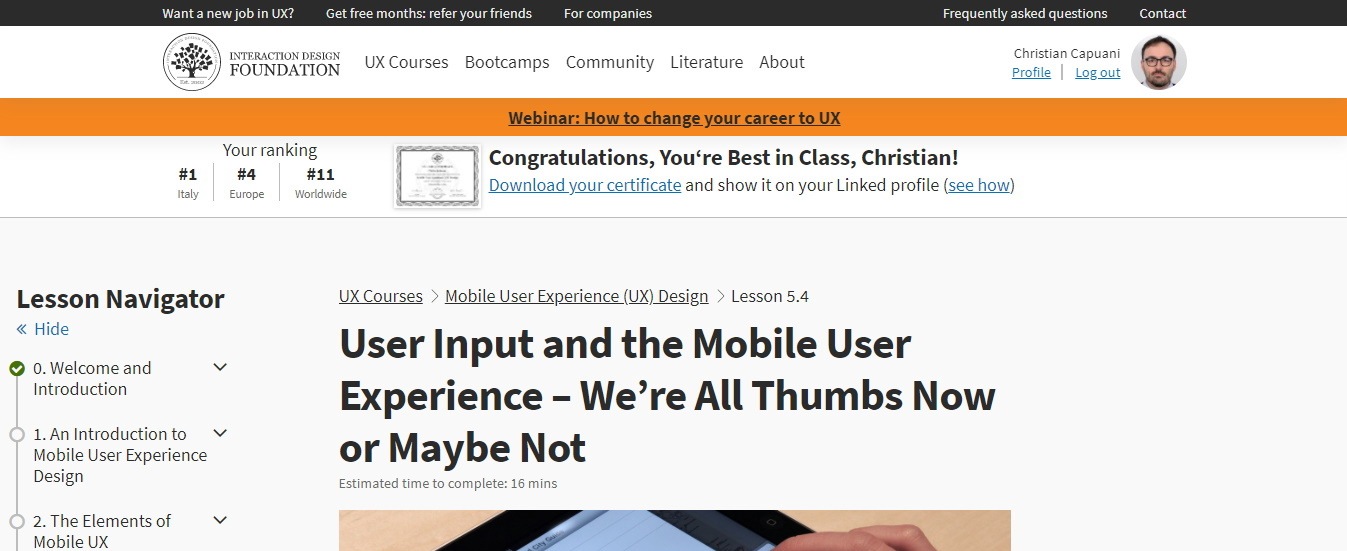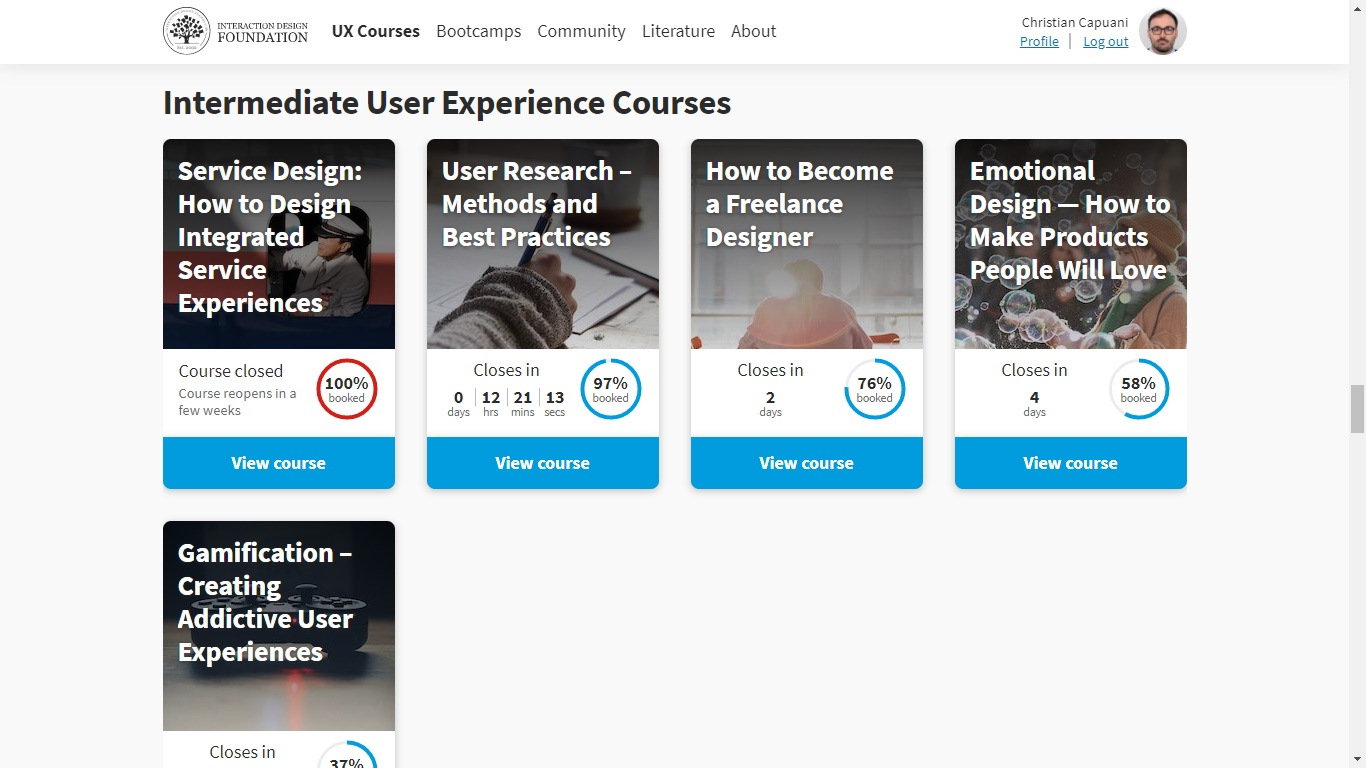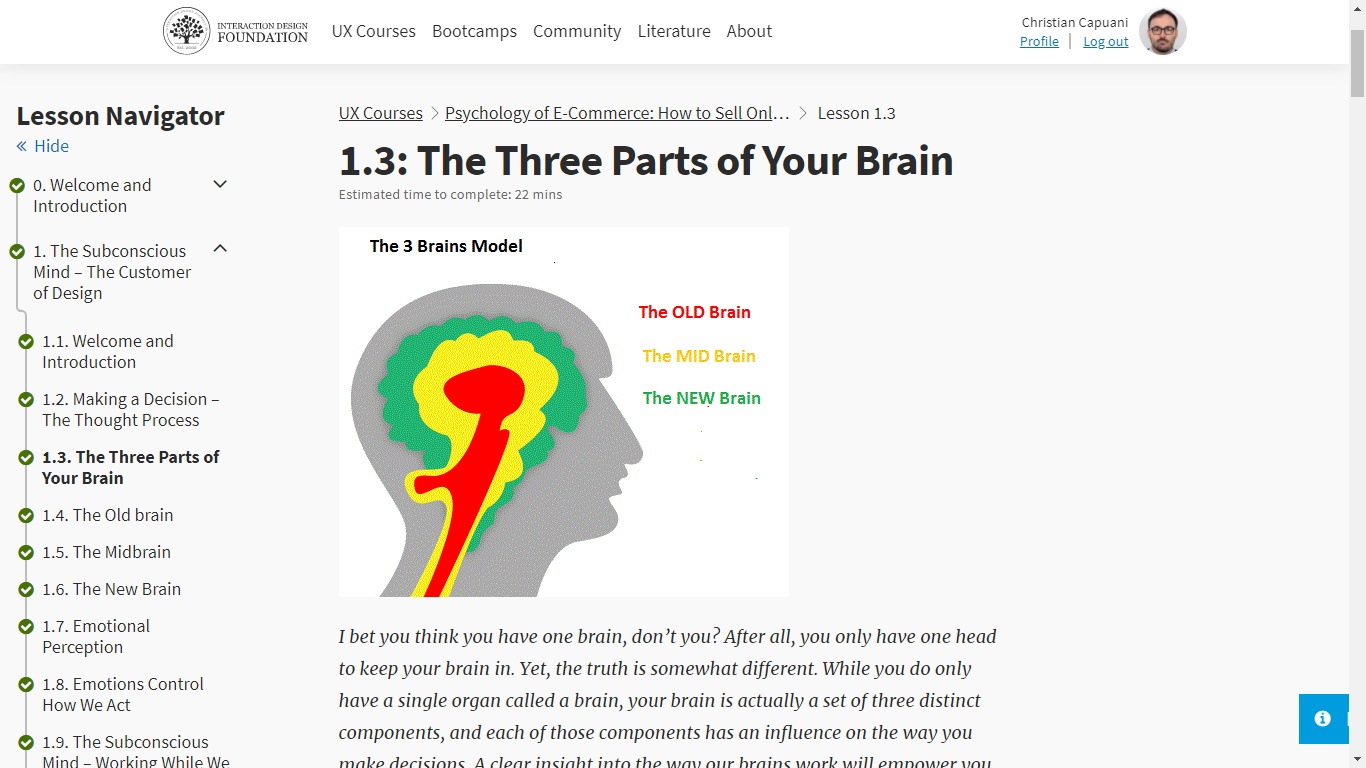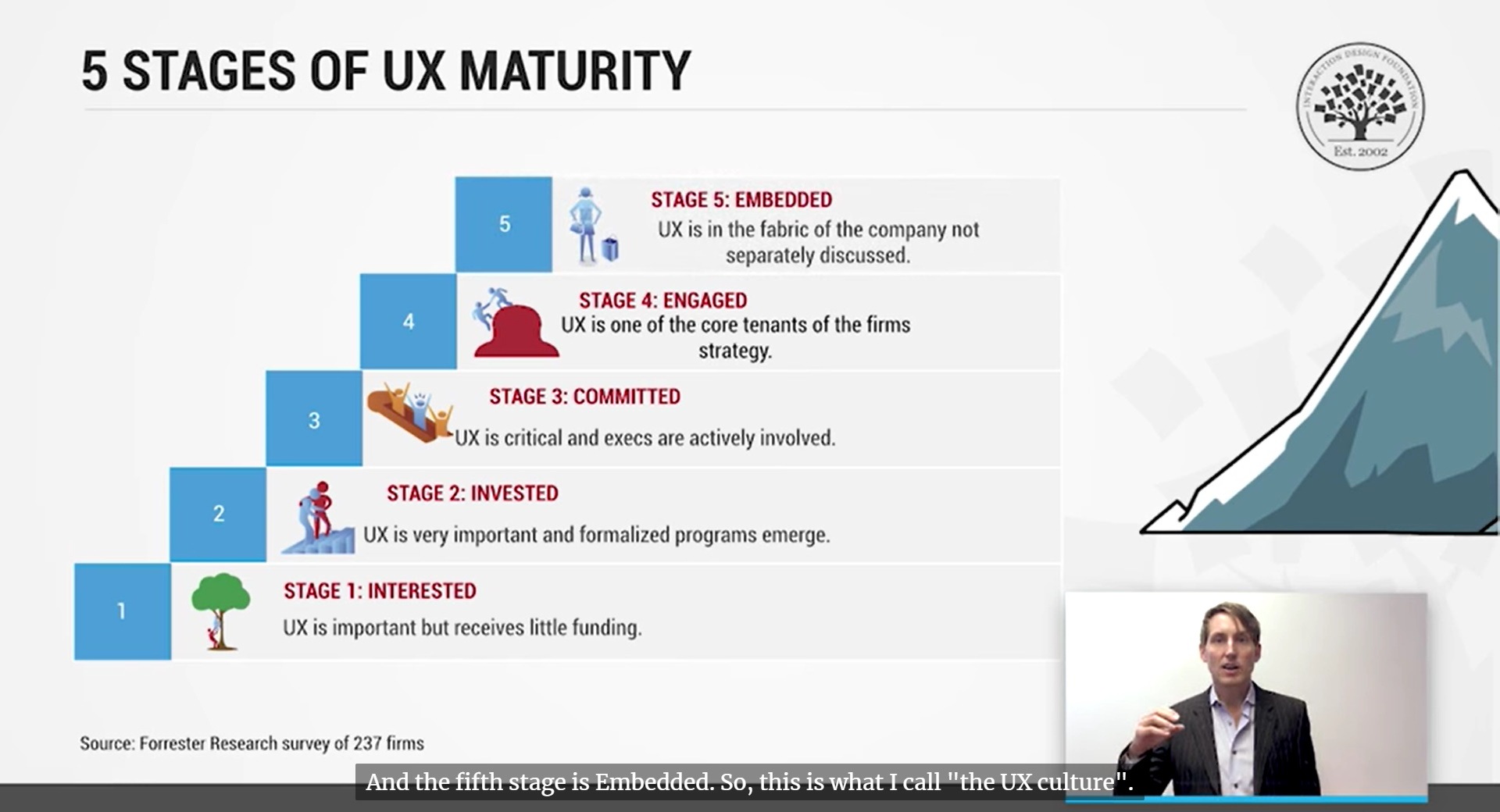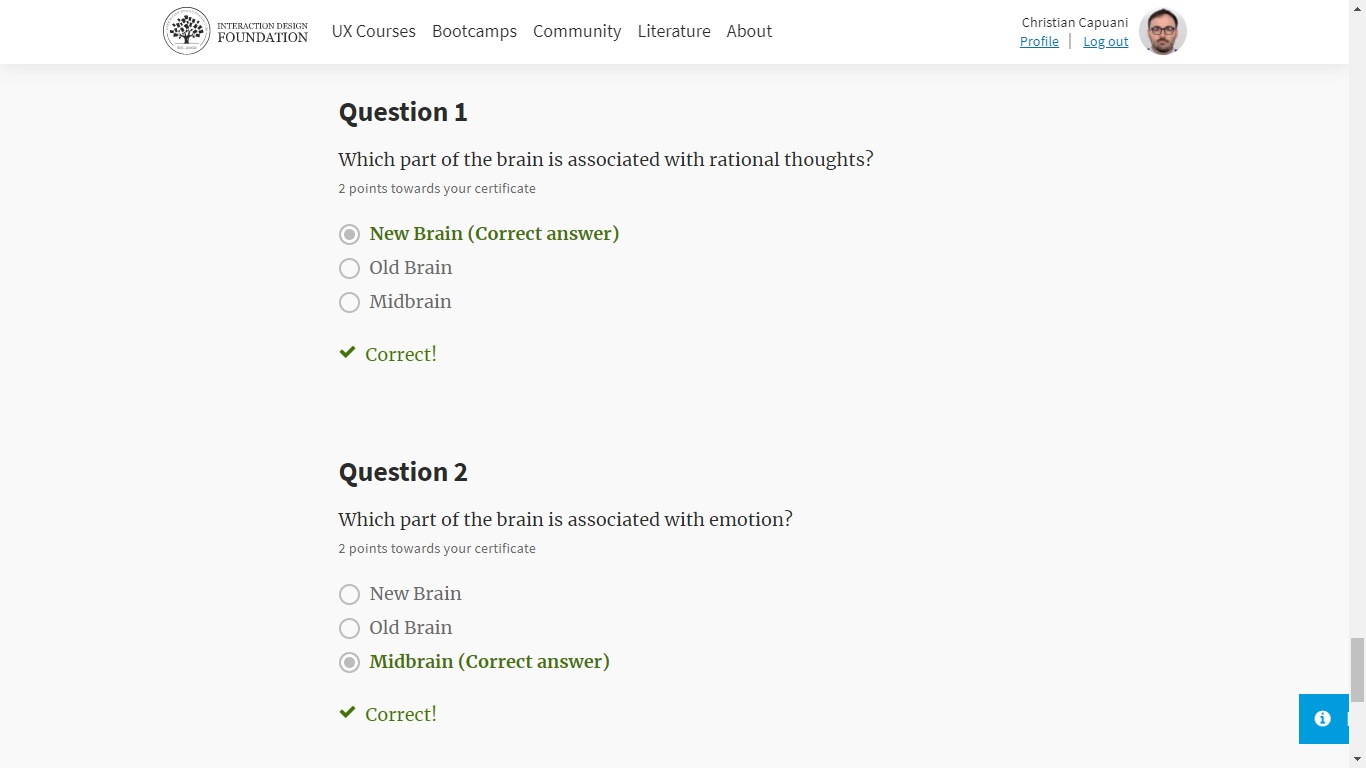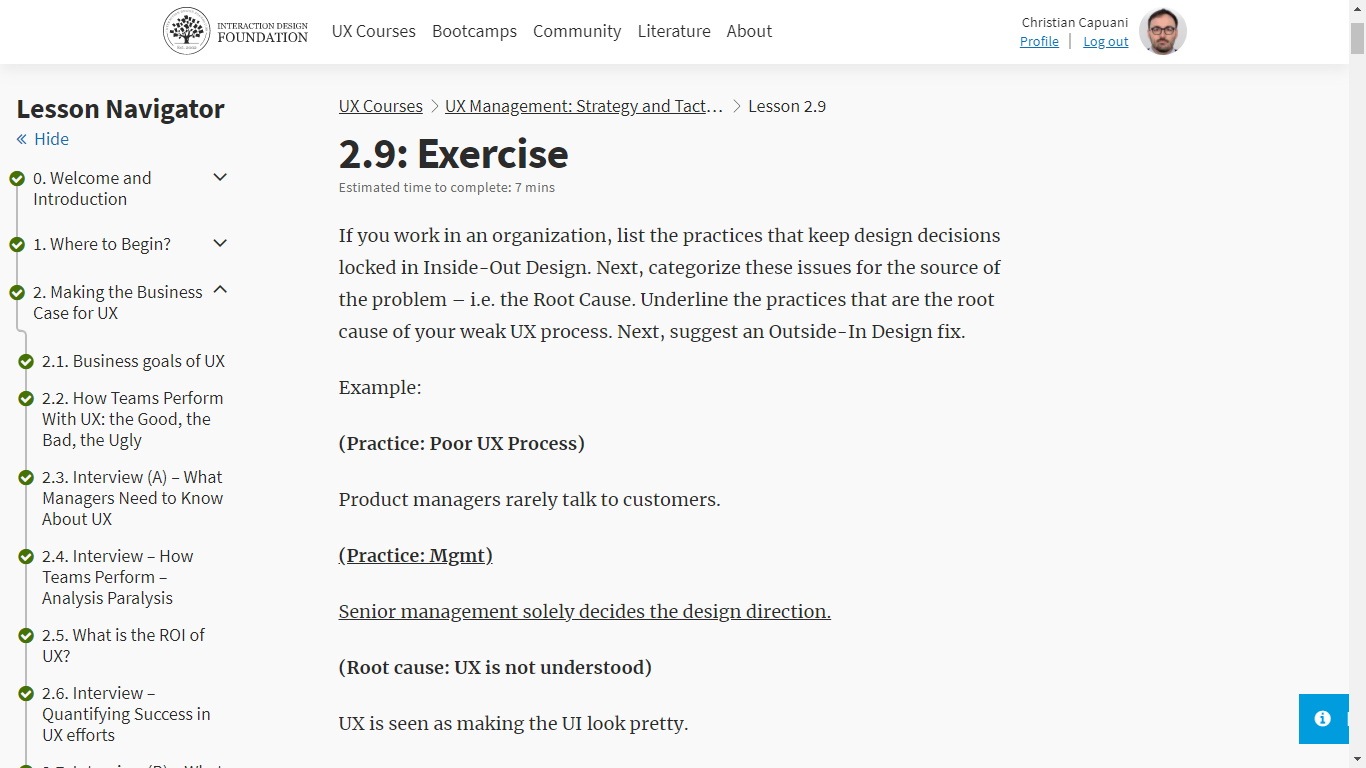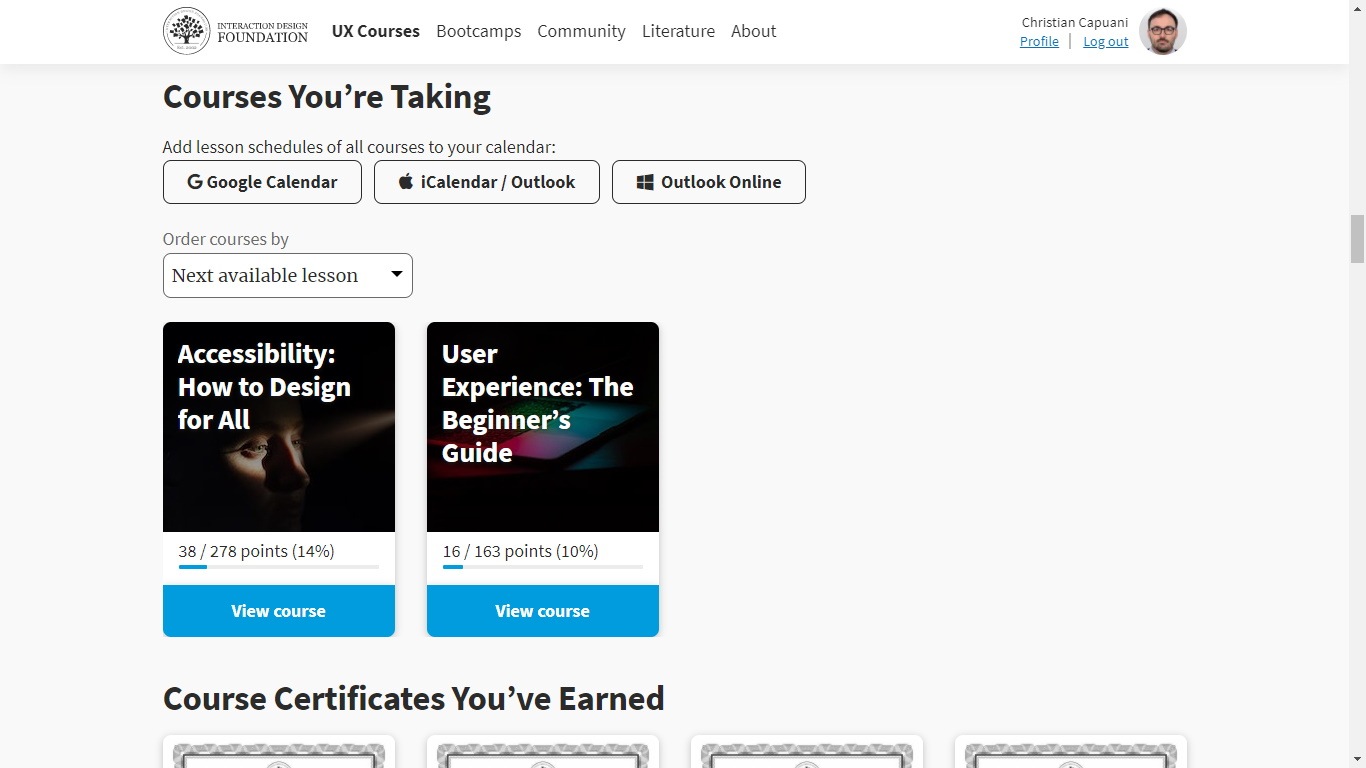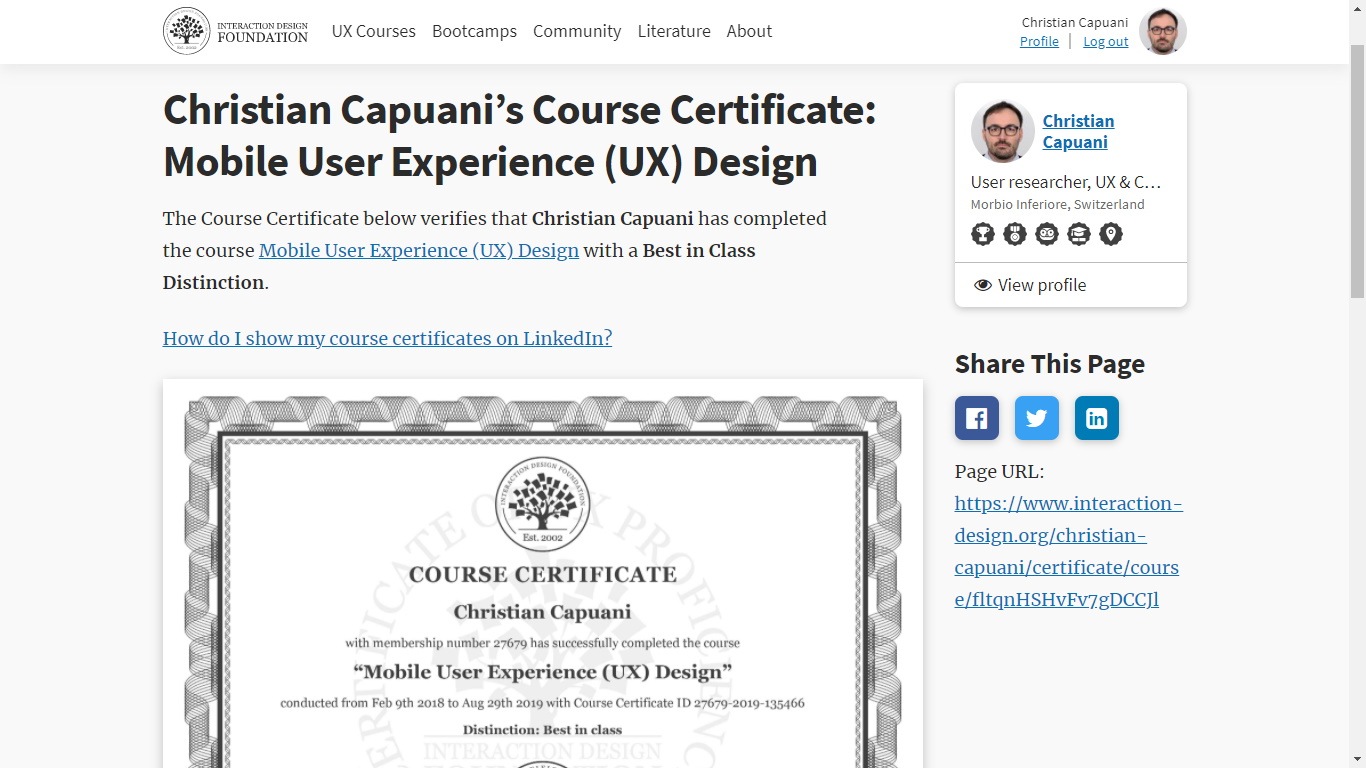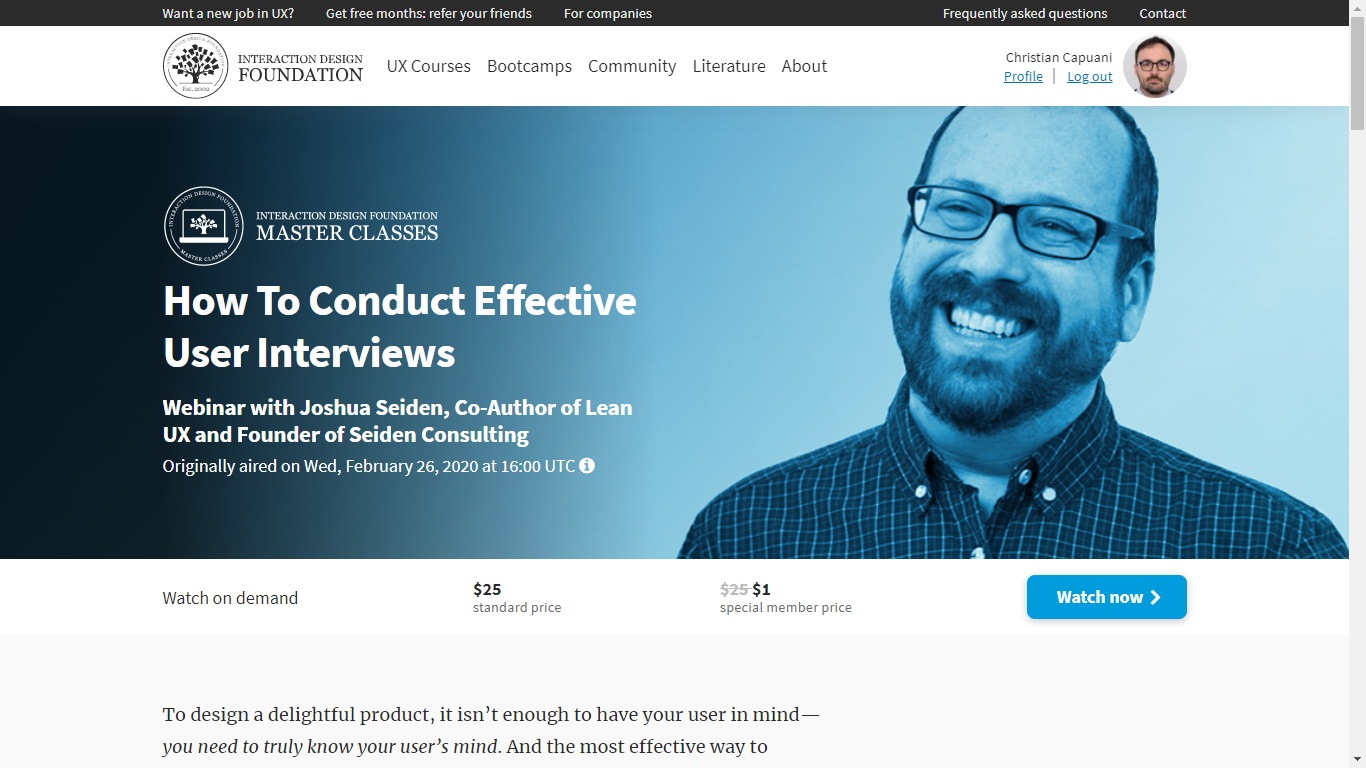360° degrees of User experience: from the basics to the niches
The greatest strength of IxDF.org is its wide and multidisciplinary offer of UX courses. Online design academies typically have one main flaw: they are either too general (for example, UX research and design processes are condensed in a 4-hour course) or too focused on few topics. On the contrary, the Interaction Design Foundation has built a multilevel catalog of 30 courses, that allow both a horizontally and vertically exploration of user experience. In this way, you can learn the basics (if you are a junior UX practitioner) and find in-depth courses on specific fields. Relevant topics like UX for augmented and virtual reality, the design of dashboards, the impact of Ajax on web usability – I strongly recommend this course! – are usually overlooked in UX education and very rarely covered.
I joined IxDF.org when I already had senior experience in user research, but nevertheless it has been very useful to me in different ways. User research – Methods and Best practices and Conducting usability testing courses helped me in fine-tuning processes in the management of usability tests and field studies.
The multilevel structure of courses (beginner, intermediate, advanced) allows you to get always new value for your professional career. The most valuable lessons I’ve attended on IxDF.org are probably the last I’ve taken. The Psychology of E-Commerce: How to sell online class is every bit as excellent as the best resources available online on behavioral design and neuromarketing: it contains theories and insightful practical examples about how our everyday choices are affected by cognitive biases. Taking into account these aspects is crucial in e-commerce optimization and testing experimentation.
UX Management: strategy and tactics is another enlightening course, especially suitable for managers and senior practitioners dealing with the development of UX culture and Agile best practices in organizations.
An encyclopedia of UX knowledge (not only for UXers)
Who is Interaction Design Foundation for? It can be useful to people with different roles and levels of knowledge and expertise.
- It’s a “must-have” for UX beginners and who are transitioning in User experience design from other specialties (art direction, graphic design). Every day I come across enjoyable and pixel-perfect user interfaces that are poor in usability and not optimized for user’s tasks: it happens when the designer ignores the mental model of the final user, the context of use, the cognitive load, and so on. With a multidisciplinary approach, the Interaction Design Foundation provides all the competencies needed for designing user experiences that work
- IxDF.com offers many opportunities to senior practitioners, too. Courses like UX Management are very useful to assess the maturity of the UX culture in your organization or finds out how to build a design team. Also, Masterclass webinars are opportunities not to be missed to attend live sessions with global design leaders and experts, like Don Norman and Donna Spencer
- I also usually recommend the Interaction Design Foundation to my non-UXer colleagues (digital marketers, project managers, SEO specialists) who are interested to broaden their expertise in User experience, Design Thinking, and Service Design
A great investment for your UX education (and your career)
To sum up, why joining the Interaction Design Foundation? Well, there is more than one reason…
- the quality and quantity of the educational resources available
- the community: more than 100,000 researchers and designers from all over the world
- the price: the annual subscription cost (you can access all the 30 courses) is much lower than some one-day courses
- the value of certifications you can get
While many UX courses only teach the How-to, the Interaction Design Foundation also teaches you the Why. And that is what you need to become a better UX professional.
